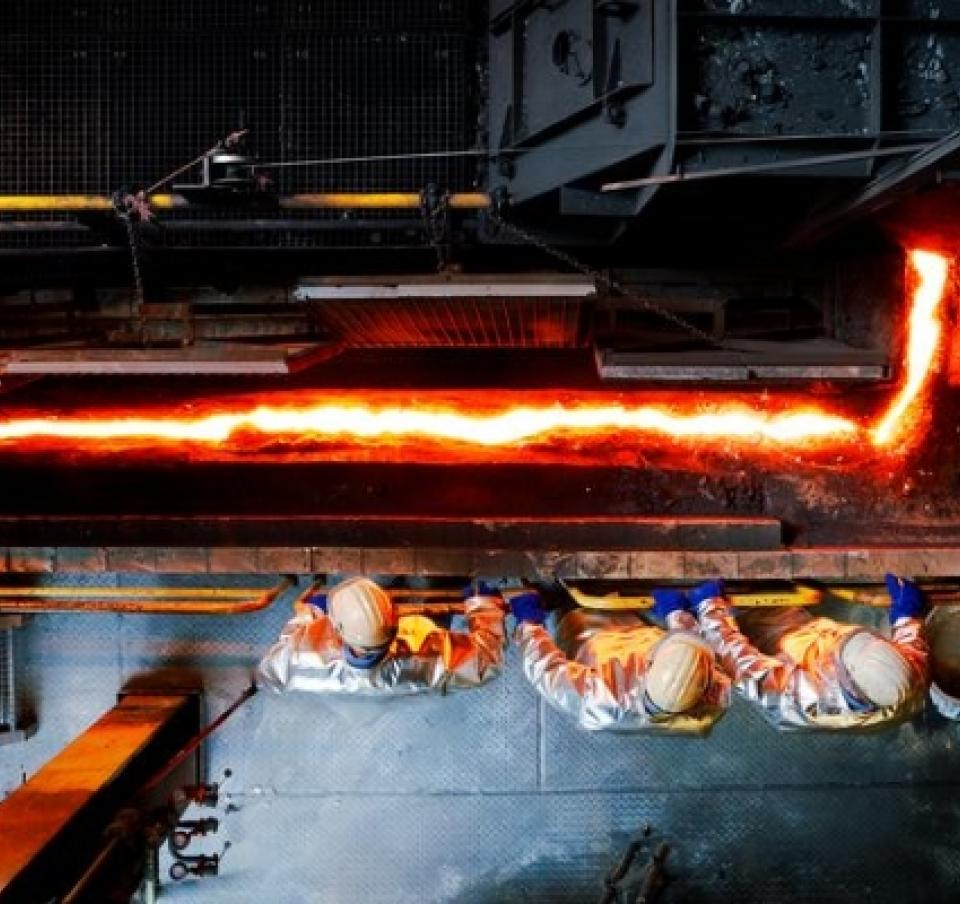Pioneering new technology which – combined with carbon capture and storage – can slash CO2 from steelmaking by 80% has entered the final testing phase at Tata Steel.
The company has been testing the ground-breaking process called HIsarna at its IJmuiden steelworks in the Netherlands. HIsarna alone has already shown it can reduce energy use and carbon emissions by at least 20%*(see notes). But when combined with capturing and storing of the waste gases, the CO2 emissions from steelmaking could be reduced by 80%.
HIsarna consists of a reactor into which iron ore is inserted at the top. The ore is liquefied in a high-temperature cyclone and drips to the bottom of the reactor. When powdered coal is injected into the reactor, it combines with the molten ore to produce pure liquid iron and CO2.
The technology will play a pivotal role in meeting future recycling ambitions of a circular economy. Tata Steel expects liquid iron made through HIsarna could be combined with up to 50% recycled scrap steel when it is converted to steel – twice the present theoretical maximum for the blast furnace route. HIsarna also allows the recovery of valuable zinc from coated scrap steels.
Hans Fischer, Tata Steel Europe CEO, said: “Our steelmaking operations are among the world’s best performing in terms of sustainability, with the lowest possible emissions and energy use.
“For a significant further reduction the steel industry needs a breakthrough technology. HIsarna can herald in a new industrial revolution, with a focus on CO2 reduction and a circular economy in which we continually reuse resources.”
Tata Steel has launched the fifth and final test run of the plant to further prove many of the new technologies being used to ensure emissions from the world’s most recyclable material can be minimised.
Tata Steel researchers have already shown the HIsarna technology works and liquid iron from HIsarna has successfully been converted into steel. Following this long test run the next phase will start: designing, constructing and testing an industrial-scale HIsarna installation, capable of making up to 20 times more liquid iron.
-ends-
Notes to editors:
* In the blast furnace process, coal must first be converted into coke while iron ore is put through a process called sintering before both materials enter the furnace. Deleting these processing steps leads to a 20% reduction of energy use and carbon emissions.
As the emissions from the HIsarna installation are almost pure CO2, they are ideally suited for capture and storage, without the need for a costly refining process. If governments choose this strategy, capturing and storing CO2 could lead to an 80% reduction of CO2 from the steel production process.
For further information:
Damien Brook on T. +44 (0)207 717 4532 or damien.brook@tatasteeleurope.com
About Tata Steel’s European operations
Tata Steel is one of Europe's leading steel producers, with steelmaking in the UK and Netherlands, and manufacturing plants across Europe. The company supplies high-quality steel products to the most demanding markets, including construction and infrastructure, automotive, packaging and engineering. Tata Steel works with customers to develop new steel products that give them a competitive edge. The combined Tata Steel group is one of the top global steel companies, with an annual steel capacity of 27.5 million tonnes and almost 74,000 employees across five continents. The group’s revenue in the year ending March 2017 was $18.1 billion.


































































































































































































































